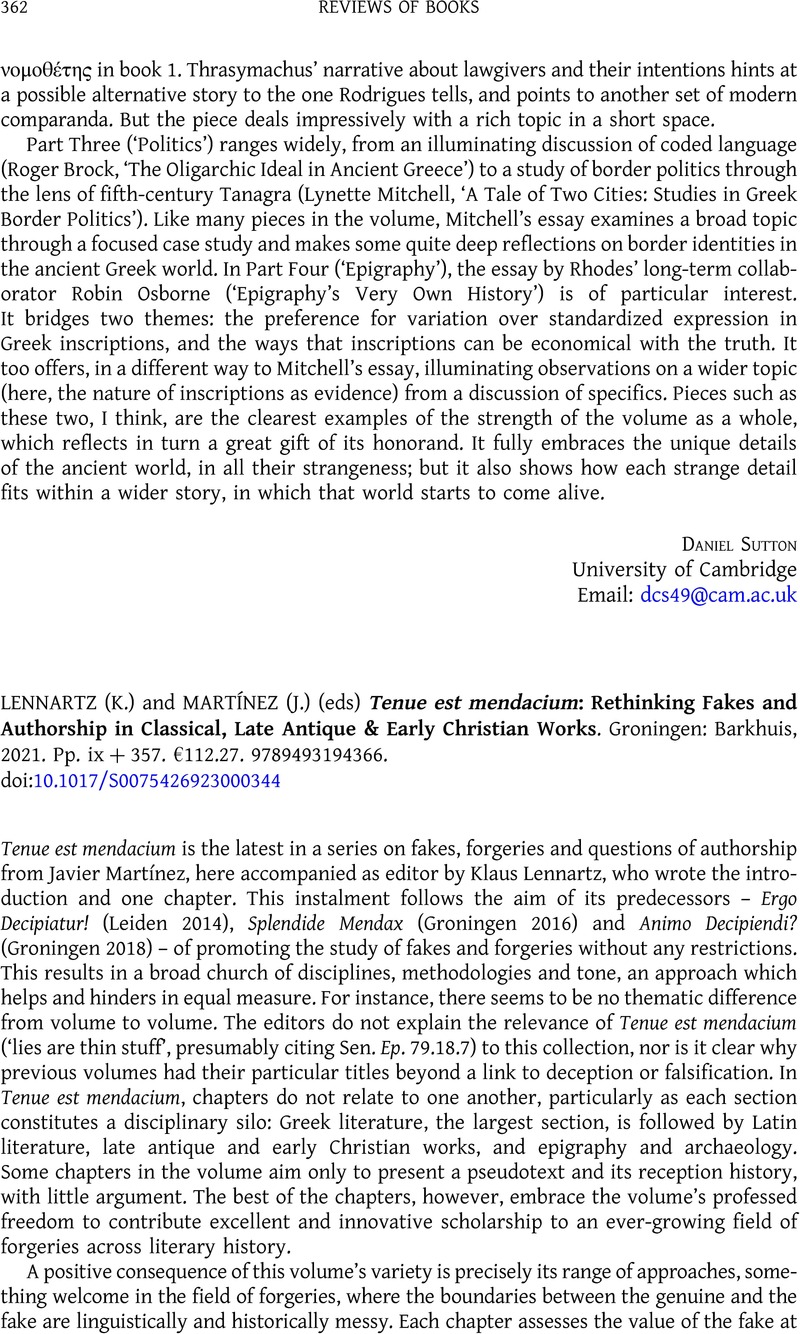No CrossRef data available.
Article contents
(K.) LENNARTZ and (J.) MARTÍNEZ (eds) Tenue est mendacium: Rethinking Fakes and Authorship in Classical, Late Antique & Early Christian Works. Groningen: Barkhuis, 2021. Pp. ix + 357. €112.27. 9789493194366.
Review products
(K.) LENNARTZ and (J.) MARTÍNEZ (eds) Tenue est mendacium: Rethinking Fakes and Authorship in Classical, Late Antique & Early Christian Works. Groningen: Barkhuis, 2021. Pp. ix + 357. €112.27. 9789493194366.
Part of:
Literature
Published online by Cambridge University Press: 09 May 2023
Abstract
An abstract is not available for this content so a preview has been provided. Please use the Get access link above for information on how to access this content.

- Type
- Reviews of Books
- Information
- Copyright
- © The Author(s), 2023. Published by Cambridge University Press on behalf of the Society for the Promotion of Hellenic Studies


